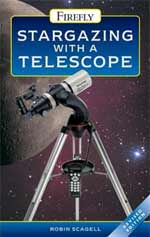
Stargazing can be as easy as lying flat on the back in a field and using the ‘Mark 1 eyeball’. Curving paths make planets out of dots, patterned specks transform into constellations and smears might just be a new comet portending an event of some occasion. Some people, satisfied at this level, happily return indoors into the warm embrace of artificial light. Yet others drive onwards. Bringing the moon’s mountains and valleys into stark relief on the terminator make this satellite seem somehow closer and more obtainable. With a bit more effort, the cloud bands of Jupiter transfigure a dot to a swirling artwork while the rings of Saturn unmistakenly add a dimension to the velvet darkness of night. And once heading down this path, it’s easy to become hooked. A little bit more power, a little bit more focus and the Mark 1 eyeball, aided by lens and mirrors, sees more and more.
Yet starting from square one without knowledge of lenses or manufacturers makes choosing an optical aid seem perhaps too mystical. This is where Scagell’s book excels, as within it he removes the mystery and aids those wanting to satiate their first cravings for power. The text contains about equal parts concerning the acquisition and usage of telescopes. He makes no assumptions about prior knowledge or geographical location and takes the reader on the typical learning curve of how viewing aids work and what types are available. He covers challenges of light pollution in cities, effects of mass marketing and actions for shoddy workmanship. A comparative description of 12 telescopes allows the reader to quickly determine the best type for their desires and resources. Case studies exemplify the pro’s and con’s of various types, making this a particularly good section for those thinking of purchasing a telescope as a gift. A large quantity of pictures leaves little to the imagination. Many telescopes are shown, as well as mounts and attachments. Skimming through this book or reading cover to cover removes a lot of mystery when contemplating a telescope purchase.
But Scagell doesn’t leave the reader hanging by just describing the telescopes and ancillary gear. He ably describes and depicts their usage and provides some honest appraisals of their results. In truth, he admits that most of these telescopes make little dots appear bigger or makes dots appear where none had been before. Glowing multi-coloured clouds as generated by the Hubble space telescope shouldn’t be an expectation to the backyard enthusiast. With this acknowledgement in mind, Scagell leads the reader on a possible progression of viewing targets which, though no more than dots, still result from photons that started on their journey millions to billions of years ago. From planispheres providing orientation and familiarization with seasonal variations to advanced GO TO telescopes that align far away stars in the centre of view finder at the simple push of a button, he presents the description of dials, buttons and techniques. On reading through this, there will be little doubt as to which telescope to purchase and what to expect to see through the new viewfinder.
There may seem to be a lot covered in this book and this appearance is valid. From attending Star Parties, to building your own Dobsonian mount, through to using hair dryers to keep dew off of lenses, it’s here. This volume of material is well covered as there is little superfluous material and the text is very tightly written in a well organized, well laid out reference. However, much of the enjoyment of a hobby is in sharing the pleasure and there are few hints or directions on identifying local or fellow enthusiasts. Also, there is little written on steps a typical hobbyist would make (e.g. smaller to larger aperture, multiple scopes or ancillary equipment). But these are small issues for an otherwise great text.
No one can help but pause for a moments reflection on seeing the plethora of stars seen in a clear night sky. Those who want to stick around and learn more about the universe in which we live immediately think of acquiring a telescope. Yet without clear information and advice, purchasing and using a telescope may lead to needless frustration. So, read Stargazing with a Telescope by Robin Scagell to avoid the frustration and start on a fantastic journey of discovery.
Read more reviews, or purchase a copy online from Amazon.com.
Review by Mark Mortimer.
